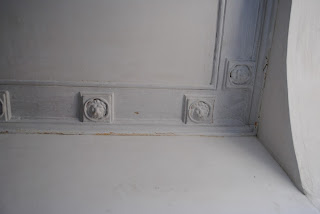Lime plasterwork in Limehouse
 |
Lime plaster in hallway |
This is a house built in 1830 in London's historic Limehouse. The area got its name from the lime kilns built on the shore of the Thames to the east of the city serving the pottery industry. In many ways Limehouse has mirrored the development of London as a port, an industrial and commercial centre but perhaps its most interesting stories are about its people.The London dockers and international seafarers this part of London has always attracted people from all over the globe in search of a new life A history of poverty, struggle, hope and vision From battles in its streets to the birth of radical politics Grinding poverty living alongside vast wealth This house has borne witness to a real slice of the peoples' Heritage
The job involved repairing the lime plaster on the interior of the house.This always presents us with the problem, we need to conserve as much of the existing work while leaving the client with a practical liveable space.The walls and ceilings were in a very poor state in particular the top coat of plaster ,however the backing or floating coat was still attached in most areas and was mainly sound. So the solution was to repair any backing coats using haired lime plaster and to apply a breathable lime based priming coat and then re-apply the finishing coat of lime plaster.There are products available for this use but they are on the whole acylic based and that seems to defeat the purpose of a lime plaster so we made up a natural breathable adhesive and it works very well saving the existing plaster and saving money
I am wasted really: saving the planet saving people money
We applied a mixture of lime putty and aggregate as the top coat and we used no gypsum to gauge with the mix. It is more than likely however that the original work was gauged, since the mouldings were gypsum and lime run and cast
Lower down on the page you can see some examples of the plaster mouldings Where the cornice has been cleaned (not by us) you can clearly see the process of a gelatine insertion moulding. a common technique used for plasterwork before the advent of fibrous plaster.
There is something about this house which leads me to believe it was possibly redecorated with plaster mouldings at a latter date. According to local records it was built in 1830 but the mouldings seem a bit out of place since they seem to be typical of a latter more elaborate Victorian style. I could be wrong ,my wife and kids seem to think I am wrong all the time but thats another story.
Note the shite modern ceiling rose replacement
 |
original lime plaster with top coat in poor condition |
 |
1830s scratch coat |
We filled in any holes in the backing/float coat and applied the primer
 |
primer applied to ceiling and walls |
 |
Finished hallway ceiling |
 |
soffit of stairs |
 |
beautiful lime plaster finish to stairwayAbove are examples of the plaster mouldings If you look carefully you can see the process involved |





